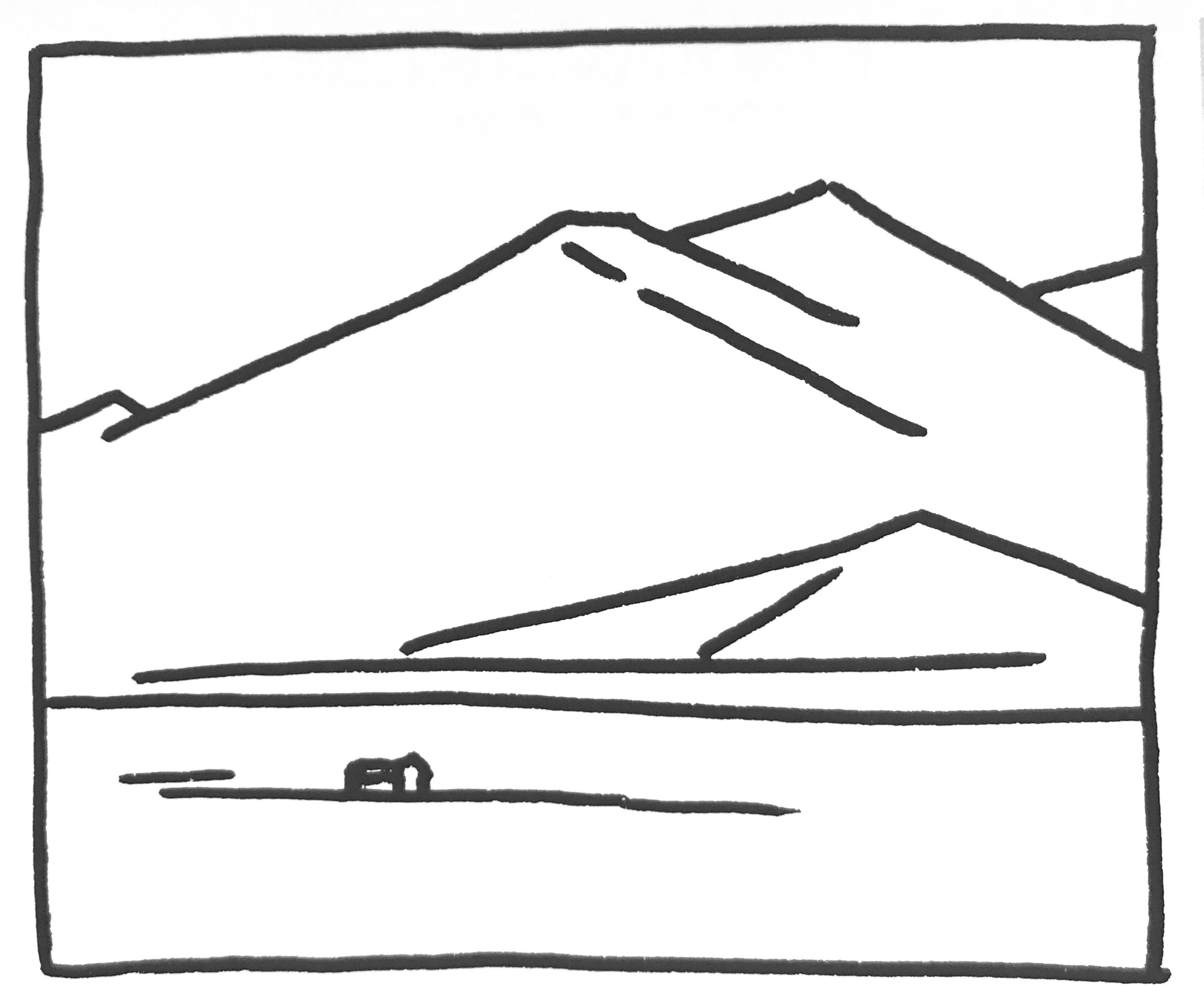Landscape Pointers: Margaret Kessler
If you’re starting to paint landscapes and could use some professional pointers, Margaret Kessler’s books are for you. The Texas-based oil artist is the author of two exceptionally useful, no-nonsense artist’s books: Painting Better Landscapes and Color Harmony in Your Paintings. I suppose if I were to be critical I might suggest catchier book titles. Something like: How’d E-Doo E-Doo E-Doo Better Whicha Painting. And How’d E-Doo E-Doo E-Doo Better Whicha Painting Part 2.
The titles notwithstanding, there are really helpful insights to be found in both of these troves, which were published and printed from the late 80’s into the 90’s. In Painting Better Landscapes, Margaret describes through her own paintings and drawings how to think more consciously about what you’re painting. For instance, your lines and compositional movement convey different kinds of flow — rapid, leisurely, and lively — as shown in the following examples.
“RAPID”
“When all the lines point suddenly into the scene, as they do in this painting, a feeling of rapid movement is created. Here the simple foreground, with its long, diagonal lines forming a wedge, quickly moves the eye to the focal point - the barn in the distance. Incidentally, you must lead your viewers to something, or there is no reason to take them on the trip.”
From Painting Better Landscapes
“LEISURELY”
“To the artist’s delight, a wavy S-curve invites you to linger a little longer in the picture. The rhythmic sequence of lines holds your attention as you slowly navigate from left to right and front to back. By starting the S-curve of the river on the bottom right here, I coax the eye to make a preliminary trip from left to right before entering the knee. Note how breaking the lines with value changes slows the flow of the movement. Points of interest then entertain along the way.”
From Painting Better Landscapes
“LIVELY”
“Meadow Run is an example of dramatic diagonal movement across the picture plane. Snappy, zigzagging diagonals and numerous lines emphasize the animated action. The sharp angles of this aggressive lifework require careful planning to avoid chaos and achieve balance.”
From Painting Better Landscapes
There are also choices you must make about the form of your composition. Margaret discusses the L-shape, the O-shape (or U-shape), and the Pyramid.
L-SHAPE
“The L-shape composition is a blocky, bold design created by a large value shape within the painting. For this design to work, the L and the negative shape created by it must vary in size — one large and one small — creating an interesting abstract pattern.”
From Painting Better Landscapes
O-SHAPE (OR U-SHAPE)
“The basic scheme here is an O-shape; if the trees were open at the top, it would be a U-shape. This kind of scheme suggests continuous motion. Sometimes, as in this on-site sketch, it is used to frame a point of interest.”
From Painting Better Landscapes
THE PYRAMID
“Because it conveys stability and permanence, the pyramid, or triangular, compoitision is well suited for mountainous scenes. This composition works especially well on a squarish canvas, which also convey solid stability.”
From Painting Better Landscapes
Have fun with these tips and with Margaret’s publications. It’s fascinating to learn that you can’t just break open an easel and a picnic basket at Shagawa Lake and start painting away. Not if you want to be accomplished. Creating landscapes requires a lot more forethought long before you start mixing the paints and breaking out the canvas.












